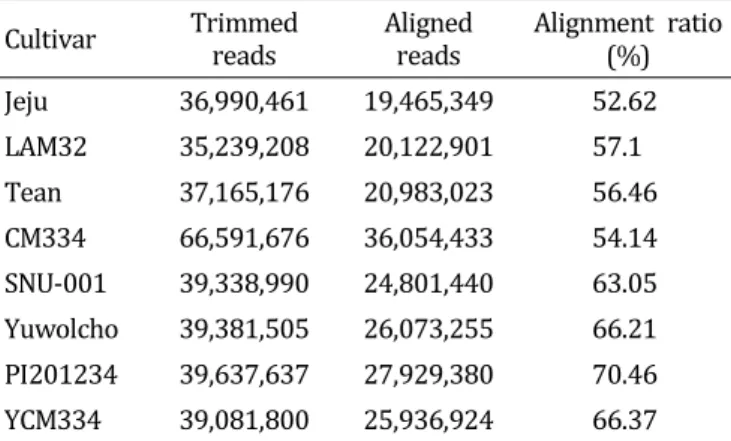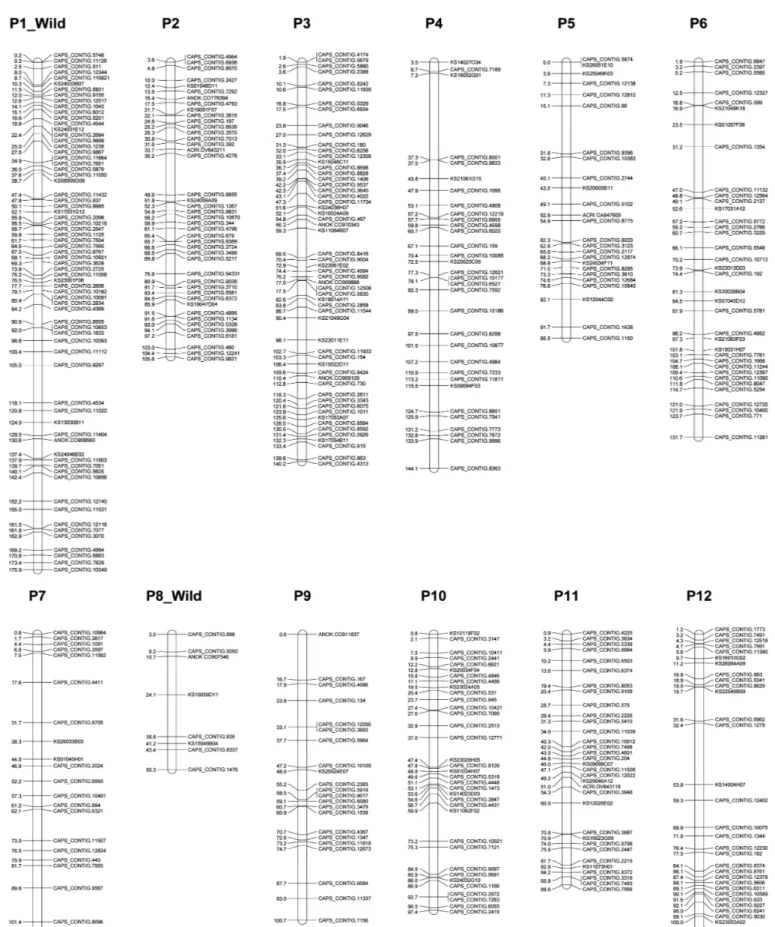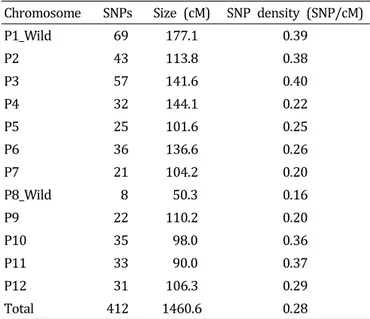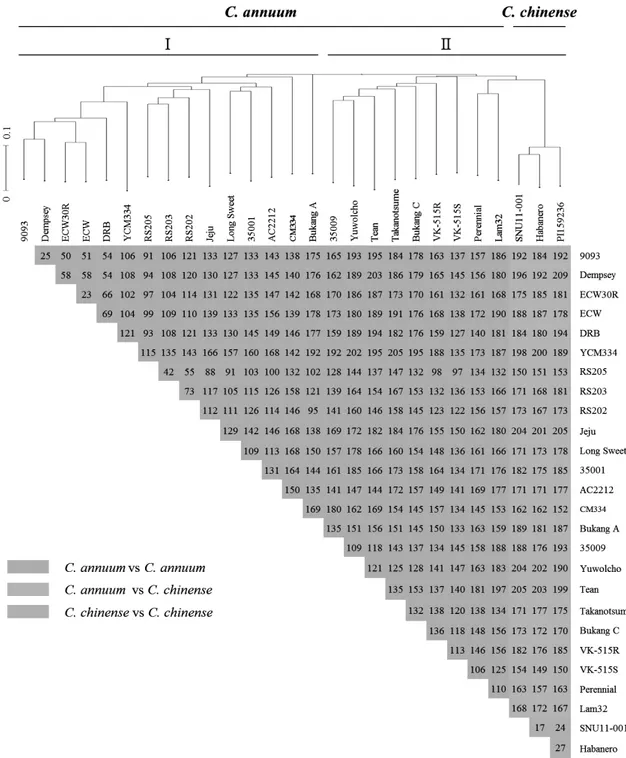Research Report
Single Nucleotide Polymorphism Marker Discovery from Transcriptome Sequencing for Marker-assisted Backcrossing in Capsicum
Jin-Ho Kang 1,2,3† , Hee-Bum Yang 1,2,3† , Hyeon-Seok Jeong 1,2,3 , Phillip Choe 1,2,3 , Jin-Kyung Kwon 1,2,3 , and Byoung-Cheorl Kang 1,2,3*
1
Department of Plant Science, Seoul National University, Seoul 151-921, Korea
2
Vegetable Breeding Research Center, Seoul National University, Seoul 151-921, Korea
3
Research Institute for Agriculture and Life Sciences, Seoul National University, Seoul 151-921, Korea
Abstract: Backcross breeding is the method most commonly used to introgress new traits into elite lines. Conventional backcross breeding requires at least 4-5 generations to recover the genomic background of the recurrent parent. Marker-assisted backcrossing (MABC) represents a new breeding approach that can substantially reduce breeding time and cost. For successful MABC, highly polymorphic markers with known positions in each chromosome are essential. Single nucleotide polymorphism (SNP) markers have many advantages over other marker systems for MABC due to their high abundance and amenability to genotyping automation.
To facilitate MABC in hot pepper (Capsicum annuum), we utilized expressed sequence tags (ESTs) to develop SNP markers in this study. For SNP identification, we used Bukang F
1-hybrid pepper ESTs to prepare a reference sequence through de novo assembly. We performed large-scale transcriptome sequencing of eight accessions using the Illumina Genome Analyzer (IGA) IIx platform by Solexa, which generated small sequence fragments of about 90-100 bp. By aligning each contig to the reference sequence, 58,151 SNPs were identified. After filtering for polymorphism, segregation ratio, and lack of proximity to other SNPS or exon/intron boundaries, a total of 1,910 putative SNPs were chosen and positioned to a pepper linkage map. We further selected 412 SNPs evenly distributed on each chromosome and primers were designed for high throughput SNP assays and tested using a genetic diversity panel of 27 Capsicum accessions. The SNP markers clearly distinguished each accession. These results suggest that the SNP marker set developed in this study will be valuable for MABC, genetic mapping, and comparative genome analysis.
Additional key words: expressed sequence tag, linkage map, marker-assisted breeding
*Corresponding author: bk54@snu.ac.kr
†




